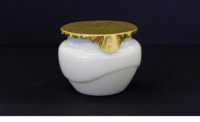If Santa Claus were real, he'd have to comply with the Food Safety Modernization Act.
Is Santa breaking all the rules?

If Santa Claus were real, he would be at the top of the US Food and Drug Administration’s “naughty list,” according to Benjamin England, a 17-year veteran of the FDA and founder of FDAImports.com. Santa would have broken almost every rule in the book and violated numerous food, drug, facility registration and import laws, regulations and standards over the years if he were real. He would be guilty of illegally importing millions of dollars worth of merchandise to children in the US, albeit as gifts. Since all imports coming into the US must comply with US Customs regulations, Santa’s activities every December 24th would be cause for both alert and action, especially as the number of gift-hungry children grows each year.
England cited three primary ways that Santa Claus’s activities would likely be targeted by FDA and its new risk-based screening system, PREDICT.
1. Undeclared food, drug and cosmetic imports. Many children request edible gifts for Christmas such as chocolate or candy; others request cosmetic products including makeup kits and lip gloss. By bringing these products into the US and failing to have them undergo FDA screening and inspection, Santa would be out of compliance, no matter how big or small the quantity.
2. Facility registration and inspection. Santa employs thousands of workers and operates a series of factories and warehouses at the North Pole, according to the traditional Santa Claus story. These factories would be producing food products, beverages, medical devices (e.g., sunglasses) and pet chews, or involve hazardous chemicals in production (such as plastics). According to England, these facilities would have to be properly registered with FDA as well as have a US agent with whom FDA could correspond regarding the safety of the products and inspection of these facilities.
3. Labels and packaging. With 2.2 billion children in the world receiving at least one gift per Christmas, one can imagine how many packages and labels would accompany Santa’s gifts and what kinds of claims, ingredients and instructions would be present. Gifts received by American children would need to have compliant labels and packaging, especially the claims and statements on products like candy, cosmetics or medical devices that minors might be receiving, says England. No one could be certain if all of the products Santa would have delivered would have labels and packaging that are compliant with current FDA regulations and the Food Safety Modernization Act.
“Just because you’ve been doing something a long time without having any FDA detentions or refusals before doesn’t mean you’re doing it right,” says England. Santa may mean well. “But he would need to take the compliance side of things more seriously before the FDA cracked down on him.”
Looking for a reprint of this article?
From high-res PDFs to custom plaques, order your copy today!





